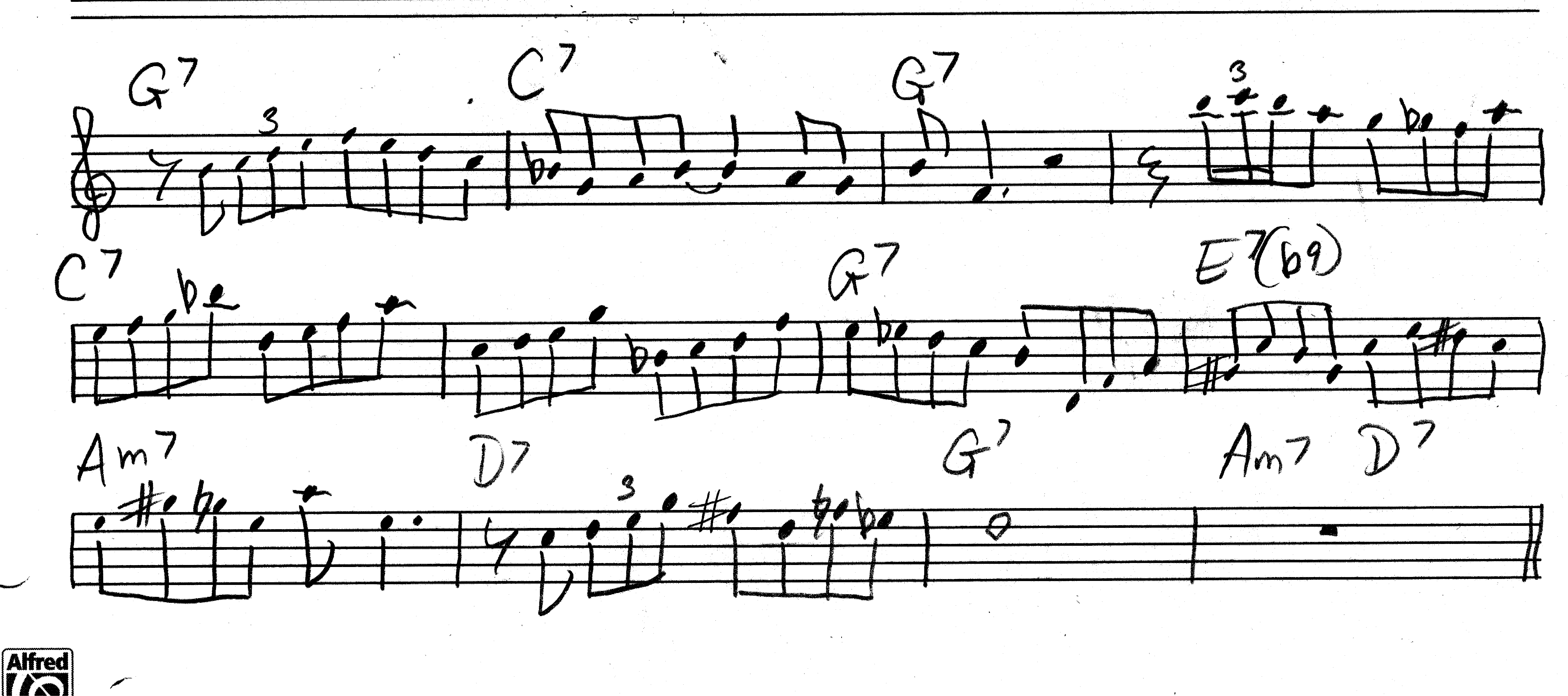I’ve been having fun lately getting the augmented scale underneath my fingers in all, ahem, twelve keys. Okay, right, there are really only four versions of this symmetrical scale that a person needs to learn, after which the note sequences repeat themselves. One of the nice things about symmetrical scales is the reduced workload.
But it’s still work, and a person has to start somewhere. For me, the work in fact began several years ago, when I first dabbled with the augmented scale long enough to become dangerous. I didn’t stick with it to the point of really mastering the scale and its application, but I did acquire a favorite augmented scale lick that I’ve used ever since. I worked it out for myself, then subsequently discovered that Oliver Nelson had employed a variation of the descending pattern long before in his solo on “Stolen Moments.”
Sigh. Christopher Columbus I’m not, and there’s nothing new under the sun. Except, of course, the way that each of us nuances and applies musical material which personalizes it and makes it uniquely ours.
Anyway, since I’ve lately been turning my attention once again to the augmented scale, both in my practice sessions and in my blogs, I thought I’d share my favorite augmented scale pattern with you. Click on the image to enlarge it. One of its most obvious applications is for outside playing. The sequence of the pattern, with anchor tones spaced by major thirds, outlines both augmented and major triads, and overall emphasizes the augmented sound.
For more information and exercises on the augmented scale, check out my posts on The Augmented Scale and Using the Augmented Scale with “Giant Steps.” You’ll also find these articles listed on my Jazz page, along with numerous other insights and exercises for improvising musicians.






